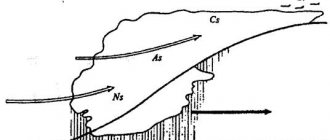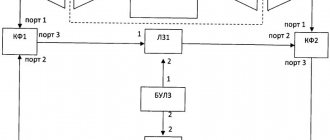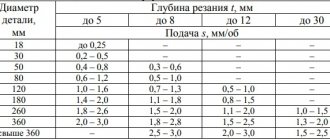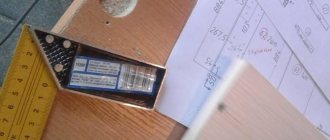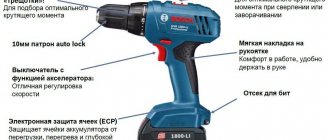How to determine wind strength without instruments?
Wind speed can be determined without instruments - by observing the flight of light objects, for example a small piece of paper, in the wind. Such an object thrown into an air flow moves in it at approximately the same speed as the wind.
Interesting materials:
How many children does Tarzan have? How many children does the teacher have? How many diagonals does a convex 16-gon have? How many diplomas does Penkin have? How long did it take for the Quran to be revealed? How long was the longest fight? How long is 1 Nanosecond? How long is 2 hours? How long is an hour on the moon? How long are the days and nights of December 22?
Reasons for education
It's no secret that wind exists. However, why is it that on some days there is no wind, on some days there is little wind, on some days there is strong wind, and on some days there is a real hurricane? The reason is that different regions of the land warm up differently, as a result of which different atmospheric pressures are observed in these regions. The easiest way to show this is by the example of the coastal zone, where land always heats up faster than water. As a result, the air above the earth's surface is hotter and, according to the laws of physics, becoming lighter, rises. The vacated space is occupied by cold air from the sea. Scientifically speaking, all this is directly related to atmospheric pressure. Air always moves from an area of higher atmospheric pressure to an area of lower atmospheric pressure. If we return to the example above, the air over land warms up faster, which means atmospheric pressure drops. Over the sea, the air does not warm up so quickly, which means the atmospheric pressure does not drop as much. As a result, there is a spread between the indicators. As soon as there is a difference in atmospheric pressure between two regions, the wind begins to blow. Moreover, the stronger this difference, the stronger the wind.
Remote psychrometer
Figure 3.
A remote psychrometer is already an industrial psychrometer, in which various resistance thermometers, as well as thermocouples and thermistors are used to measure air humidity. The main types of such devices are manometric and electrical psychrometers. It all depends on the type of thermometer used.
A manometric psychrometer, as the name suggests, usually uses either a two-channel manometric thermometer or two single-channel thermometers, where one of the thermocylinders is equipped with a humidification system.
Psychrometers that use resistance thermometers, thermocouples, and thermistors have become more widespread. However, as with other psychrometers, a prerequisite for reliable operation and accuracy of readings is the use of dry and moistened transducers and temperature sensors.
Rating of the best anemometers
| Nomination | place | Name of product | price |
| The best vane anemometers | 1 | Testo 410-2 | 13 500 |
| 2 | MEGEON 11005 | 7 440 | |
| 3 | CEM DT-318 | 5 100 | |
| 4 | MEGEON 11002 | 1 900 | |
| 5 | AMTAST AMF001 | 2 350 | |
| 6 | ADA instruments AeroTemp 30 | 1 990 | |
| The best thermal anemometers | 1 | Testo 425 | 39 900 |
| 2 | CEM DT-8880 | 11 649 | |
| 3 | Testo 405 | 9 900 | |
| The best cup anemometers | 1 | ATT-1021 | 10 860 |
| 2 | SKYWATCH METEOS NEW | 6 670 | |
| 3 | Megeon 11030 | 5 920 |
Why is air speed measurement necessary?
Air speed is a decisive characteristic not only in meteorology, but also in various industries, such as:
- mining industry. Mine atmosphere is a mixture of gases, vapors and dust, the appearance of which is typical during mining operations. Monitoring and recording of such phenomena ensures the safe operation of mining enterprises.
- agricultural industry. Measurements and calculations of air flow speed are necessary when spraying and drip application of pesticides, fertilizers and biological products to various crops.
- construction, repair, installation. The use of anemometers is widespread during construction and repair work, for example, it is necessary to assess the functioning of ventilation systems, as well as to analyze premises for compliance with sanitary requirements.
- small aviation industry. Assessing the quality of engine mechanisms in small aviation is impossible without the use of special equipment.
- energy. Anemometers are used in two areas of energy - studying the wind potential at the installation site of a wind generator and monitoring a wind turbine.
The use of air flow measuring instruments is of particular importance in many areas, and when choosing an anemometer model, it is important to take into account the scope of its use and a number of features of the device.
Thermal or thermal
It is known that in hot weather a fresh breeze pleasantly cools the skin. And these are not subjective feelings, but a real fact. The operation of thermal anemometers is based on this principle. The sensitive element of this device is a thread made of a refractory material through which an electric current is passed. The conductor heats up to a higher temperature than the surrounding environment. The blowing air cools the conductor, as a result of which its resistance changes. There are 3 sensor connection schemes:
- with a fixed current value;
- with constant voltage;
- thermal constant connection.
This design is used in the mass air flow sensor (MAF), which is equipped with all modern car engines.
What is wind characterized by?
Speed
Everyone noticed that the wind blew at different speeds.
Sometimes it is not there at all, and sometimes it is so strong that it even “knocks you off your feet.” Wind speed can say a lot, and in geography, a special Beaufort scale is used to study this parameter. It consists of 12 points, where 0 is calm (no wind) and 12 is a hurricane. Table: Beaufort scale (wind force)
| Points | Name | Speed(m/s) | Characteristic |
| 0 | Calm | up to 0.2 | Smoke from the chimneys rises straight up |
| 1 | Quiet | 0,3-1,5 | The smoke from the chimneys has a slight slope towards the wind |
| 2 | Easy | 1,6-3,3 | The leaves on the trees move faintly |
| 3 | Weak | 3,4-5,4 | The leaves on the trees are moving quite strongly |
| 4 | Moderate | 5,5-7,9 | Leaves, dust and other light objects rise from the ground. |
| 5 | Fresh | 8-10,7 | Thin trees begin to sway |
| 6 | Strong | 10,8-13,8 | Thick trees begin to sway |
| 7 | Strong | 13,9-17,1 | Bends tree trunks |
| 8 | Very strong | 17,2-20,7 | Branches on the trees begin to break |
| 9 | Storm | 20,824,4 | Pipes and tiles are flying off houses |
| 10 | Heavy storm | 24,5-28,4 | Even fairly large trees are uprooted |
| 11 | Fierce Storm | 28,5-32,6 | Mass damage |
| 12 | Hurricane | more than 32.7 | Massive destruction |
Wind speed is always measured in meters per second. If we talk about the earth's surface, then most often the wind blows here at a speed of up to 8 m/s. An anemometer is used to measure wind speed . This device is installed at a height of 2 meters in an open area.
Wind speed directly depends on the difference in atmospheric pressure: the greater the difference, the stronger the wind blows. To understand how this condition works out in practice in geography, consider a situation where we do not have data on speed, but we have data on the level of atmospheric pressure in different regions:
- NP “1” 770 mmHg -> NP “2” 750 mmHg
- NP “1” 770 mmHg -> NP “2” 740 mmHg
From the condition above we can calculate the difference, which for condition No. 1 is 20 points, and for condition No. 2 - 30 points. Therefore, only on the basis of these data it can be stated that with the second data the wind speed will be higher.
Direction of the wind
In geography, a weather . The main feature of this device is that it is installed in an open area and can rotate freely on its axis. As a result, the dominant wind direction can be determined by the position the weather vane takes. Typically, weather vanes are installed at a height of 10 to 13 m, and it is very important that the installation location is in an open space.
If we talk about direction, it is determined by the side from which the wind originates. For example, if air masses move from south to north, we can talk about a south wind. The direction of the wind itself can provide immediate knowledge of the weather that may come with that wind, and also allows the meteorologist to create a wind rose map to understand which direction of wind and air masses is most likely to move at a particular time of year in a particular region. A wind rose is usually built over a month or longer period of time, and the map looks something like this.
In one of the following materials we will talk about what a wind rose is in more detail, but now we can only say that this graph shows the dominance of a certain wind direction. In this case, we see the dominance of the north wind over the south.
Types of winds
All the winds that blow on Earth can be divided into 3 large categories:
- Variables (monsoons, breezes).
- Constant (trade winds, westerly winds).
- Local (foehn, bora, sirocco, dry wind, samum).
Variable winds
Breeze is a wind that changes direction 2 times a day. Because of these properties, breezes are often called local winds. These winds occur in coastal areas and cover a fairly narrow band. Typically, the breeze penetrates land no further than 3 km. Why does the wind constantly blow on the banks of rivers? The reason is the heating of the surface: land and water are heated unevenly; There is always a difference in atmospheric pressure over water and land.
During the day the water is cold, but the land warms up quite quickly. This means that the atmospheric pressure is higher over water and lower over land. Warm air rises and a cool wind from the sea begins to blow.
At night the situation changes. This time the land is cooler as it cools quickly while the sea continues to retain heat. Consequently, the warm air over the sea rises and a cool breeze blows from the land.
It is precisely this property of the breeze that is associated with the fact that earlier, when ships were mainly sailing, fish went out fishing at night (there was a fair wind at sea) and returned in the morning (there was a fair wind from the sea).
Everything we talked about above is also typical for monsoons, which are an analogue of a breeze, but with a cycle change not 2 times a day, but 2 times a year. These winds are most characteristic of the Asian Pacific coast. The summer monsoon blows from the sea and brings with it the rainy season. The winter monsoon, on the other hand, blows into the sea. At this time of year, moisture is minimal as air masses move into the ocean.
Constant winds
Winds that do not change their direction throughout the year are called constant. Examples of such wind blows include:
- Trade winds move from the tropics to the equator. As a result of the rotation of the earth, the trade winds do not blow straight, but form an inclination towards the west.
- Northwestern (transitioning to western) - blows in the direction from the tropics north to temperate latitudes. As a result of the Earth's rotation, these winds are deflected to the east. That's why they say they blow from the west. They are very strong and sailors often call them “roaring forties”, “fierce fifties” and “screaming sixties” - by latitude.
- Northeast winds blow from the North Pole.
- Southeast - blow from Antarctica.
Local winds
It was already noted above that in many sources the breeze is called the main local wind. In addition to this, this category includes:
- Bora - is formed in the cold season (or in the warm season during hail) and blows from the mountains to the sea. Usually the wind is quite strong.
- Dry wind is a hot wind that blows in semi-deserts.
- Sirocco is a North African wind characterized by heat and dryness.
- Samum is the wind of North Africa and the Arabian Peninsula. Sultry.
- Foehn is a strong wind from the mountains to the plains.
Device
The weather station has a rather complex structure and consists of a large number of components. In order to understand the operation of the device from a technical point of view, it is necessary to become familiar with the design of the weather station in as much detail as possible.
If we talk about the design of analog weather stations, their design includes the following devices:
- thermometers designed to measure air and soil temperature;
- thermometers to determine minimum and maximum values;
- barometer , whose functionality includes measuring pressure;
- hygrometer - this device is necessary to determine the level of atmospheric humidity;
- anemorumbometer (or weather vane), which is used to measure wind indicators (in particular, speed and direction);
- precipitation gauge - a device that determines the level and intensity of precipitation (rain, snow, hail);
- pluviograph - this technical element is needed to register liquid precipitation in the warm season (and the registration process is carried out continuously);
- the thermograph is responsible for constant monitoring of air temperature indicators;
- thanks to the hygrograph, the level of atmospheric humidity is monitored;
- a comprehensive psychrometer helps determine temperature and humidity;
- in order to measure ice-frost deposits, the weather station device is equipped with a specially designed ice machine ;
- thanks to the iceoscope, the process of measuring frost and frost is carried out;
- a barograph is an apparatus that is necessary to determine the barometric trend;
- to measure the depth of snow cover, the weather station is equipped with a staff ;
- the transmissometer determines the meteorological optical range;
- a cloud searchlight (or ceilometer) determines the lower boundary of the clouds;
- evaporometer GGI-3000 is designed to measure the amount of evaporation from the soil surface;
- a heliograph is used to record sunshine .
Moreover, depending on the specific model of the meteorological station, its design may vary. Before purchasing, it is very important to study the design of the device.
